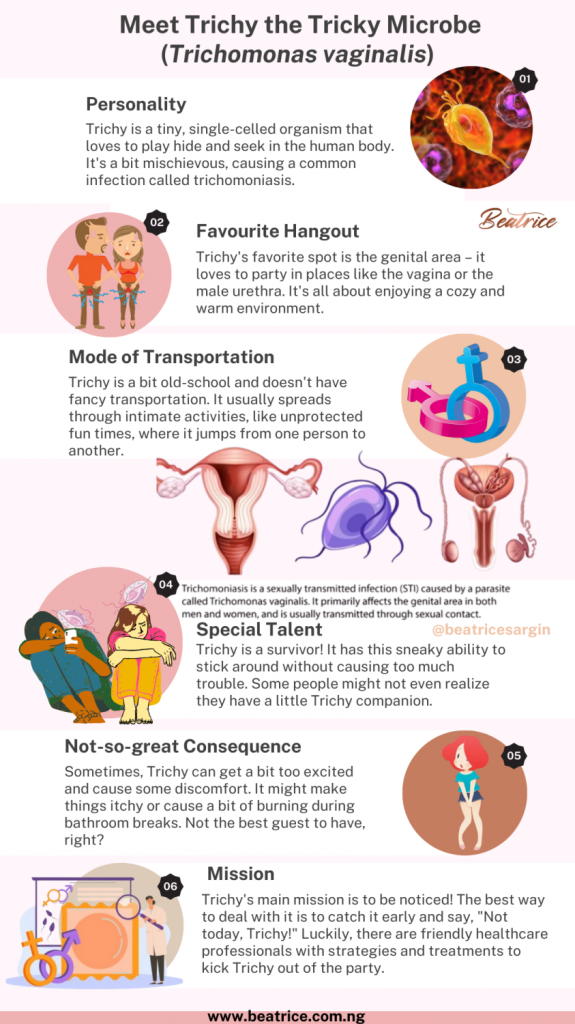The Impact of Trichomonas vaginalis Towards Health

Fun Facts About Coconuts Unheard Of
May 8, 2023Imagine Trichomonas vaginalis as a tiny troublemaker that causes a common infection called trichomoniasis (Obetta et al., 2023). This troublemaker is actually a single-celled parasite, which means it’s a tiny organism that lives in warm, moist areas, particularly in the genital area (Van Gerwen et al., 2023).
Now, this little troublemaker loves hanging out in places like the vagina in women and the urethra in both men and women. It’s often spread through sexual contact, so it’s classified as a sexually transmitted infection (STI) (Ziaei Hezarjaribi et al., 2022).
Take a Look at Trichy’s Little Journey Through Detection & Treatment
Trichomonas vaginalis doesn’t play fair when it infects someone. It can cause some uncomfortable symptoms like itching, burning, and unusual discharge down there (Ziaei Hezarjaribi et al., 2022). But here’s the tricky part: sometimes, people infected with this parasite don’t show any symptoms at all, which makes it even more sneaky (Schumann and Plasner et al., 2023). Trichomoniasis can increase the risk of other complications such as pelvic inflammatory disease in females which can lead to long-term reproductive health issues (Asemota, 2018).
Trichomoniasis poses a global health issue, with WHO estimating 276 million new cases annually. The good news is, trichomoniasis can usually be treated with medication. Once diagnosed, a doctor can prescribe antiprotozoal drugs like metronidazole and most likely the “nidazole comrades type of medication” to help get rid of the troublemaker and clear up the infection. The best approach is to treat both sexually active partners to avoid reinfection if one of them is currently being treated (Schumann and Plasner et al., 2023).
Read Also: What Are The Symptoms Of Thyroid Problems in Females?
The key to dealing with Trichomonas vaginalis is being aware of it and taking steps to prevent it, like practising safe sex and getting tested regularly if you’re sexually active as it is very common in sexually active persons (Obetta et al., 2023). That way, you can keep this tiny troublemaker from causing any havoc in your body!
References
- Asemota OO (2018). Trichomoniasis in Nigeria: A Review. Biomedical Research 29(12):18-493. https://doi.org/10.4066/biomedicalresearch.29-18-493
- Kandamuthan S, Thambi R and Yeshodharan J (2014). Trichomoniasis: Is It Always Sexually Transmitted? Indian Journal of Sexually Transmitted Diseases and AIDS 35(2):166–167. http://dx.doi.org/10.4103/0253-7184.142422
- Obetta KC, Ogbonna IO, Oyigbo DN, Ugwu OO, Ugwu KO, Onah BN, et al. (2023). Prevalence of Trichomoniasis Infection among Adults in Nigerian Community Settings. Medicine 102(37):e34585. http://dx.doi.org/10.1097/MD.0000000000034585
- Schumann JA and Plasner S (2023). Trichomoniasis. Treasure Island StatPearls Publishing; 2024 January St. Petersburg, Florida, United States. Available from: https://www.ncbi.nlm.nih.gov/books/NBK534826/
- Van Gerwen OT, Opsteen SA, Graves KJ and Muzny CA (2023). Trichomoniasis. Infectious Disease Clinics of North America 37(2):245-265. https://doi.org/10.1016/j.idc.2023.02.001
- Ziaei Hezarjaribi H, Saberi R, Fakhar M and Sadeghian N (2022). Is There Any Relationship between Trichomonas vaginalis Infection and Male Urethritis Risk? A Systematic Review and Meta-Analysis. Interdisciplinary Perspectives on Infectious Diseases. 2022:e8359859. http://dx.doi.org/10.1155/2022/8359859


